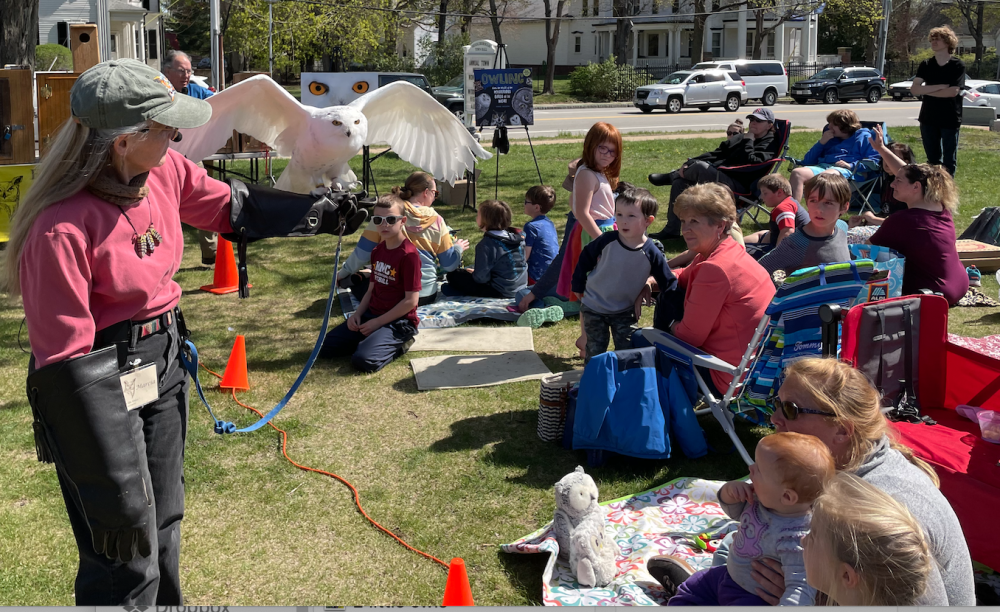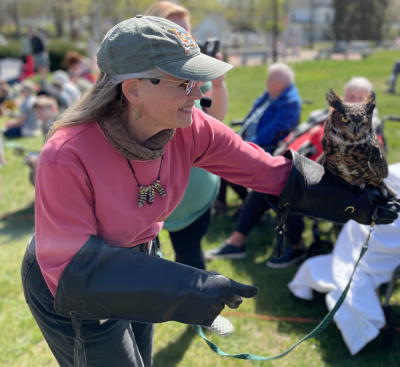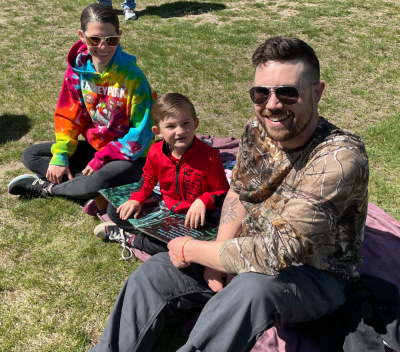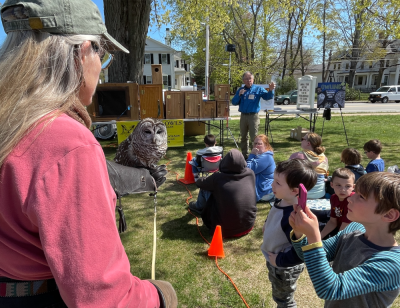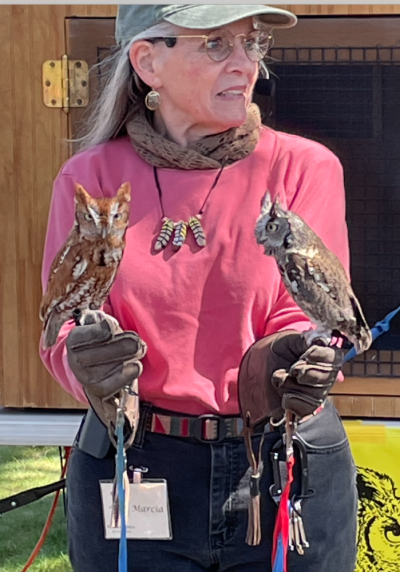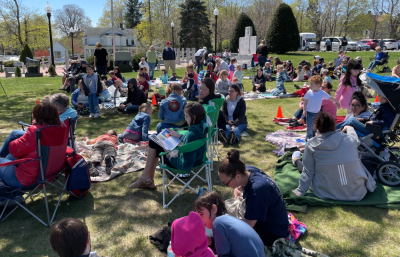Kids learn to give a hoot about owls at Middleboro event
MIDDLEBORO — Plenty of hooting and hollering could be heard on the Middleboro Town Hall lawn Thursday, April 20 as visiting organization Eyes on Owls shed light on the birds, some of which can live in area backyards.
To the oohs and aahs of the audience, Mark Wilson and Marcia Wilson brought out living examples of owls, including great-horned, barred, screech and snowy owls.
Audience members, who filled a good portion of Middleboro Town Hall lawn, were encouraged to perform their best impressions of owl calls, leading to plenty of “Whoots’’ filling the air.
Learning these sounds can help identify owls in the area, Marcia Wilson said. When the sun goes down, she suggested, people should head outside and listen for owl calls. If one is heard, call to it, she said. “Maybe they’ll answer back,’’ she said.
Marcia and Mark Wilson stressed that these owls are not pets, which is one reason they do not give them names. The owls are permanently disabled, often due to collisions with vehicles, and cannot live on their own.
They have federal and state permits to keep and display the owls for educational programs. They keep them in specially constructed enclosures.
They brought some of their collection for the audience to view up-close.
These included a beautiful snowy owl, which has become familiar to people as the owl companion of Harry Potter. These owls nest in the Arctic tundra and other northern locations, including Canada and Alaska, but at least a few of the birds tend to visit New England each winter, they said.
Their white coloring, interspersed with black patches, helps create camouflage against the snow.
They also showcased a great-horned owl, the most widespread owl in North America. These birds are among the easiest to observe because they are fairly acclimated to people and are known to nest in wooded areas of cities. Chances are “good to great’’ that the birds can be found in Middleboro, according to Eyes on Owls.
These relatively large owls can eat raccoons, squirrels, rodents, skunks and small cats and birds. They make a distinctive four-note call of Hoo-Hoo, Hoo-Hoo.
Barred owls have a distinctive call that has been described as sounding like “Who cooks for you? Who cooks for you all?’’ The bird, named for the bars of coloring, can be found in areas of mixed woods, swamps and wetlands.
Eastern Screech Owls, which weigh less than a pound and can be red or grey, do not migrate. Mark Wilson encouraged people to put up a nesting box in an effort to draw them to the yard. A second box might be placed since squirrels often take one over, he said.
Marcia Wilson encouraged people to get outside to look _ and listen _ for the owls. Success is very possible, she said.
“Middleboro is birdy,’’ she said. “It’s a birdy place.’’



